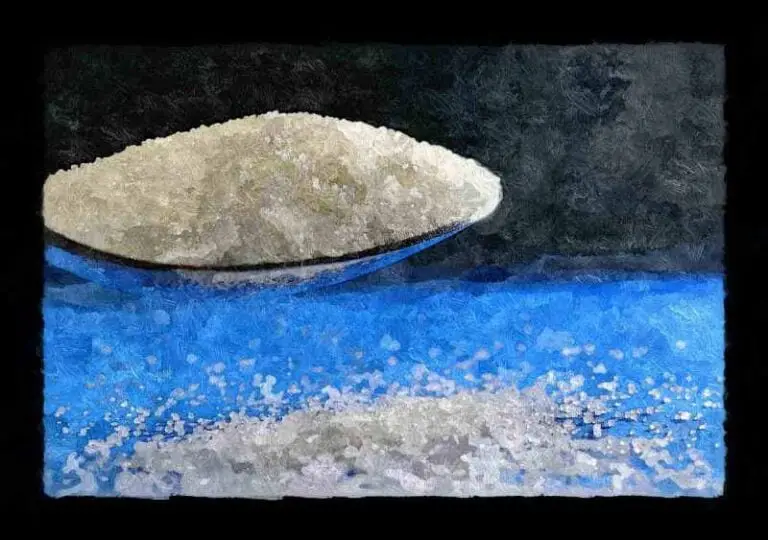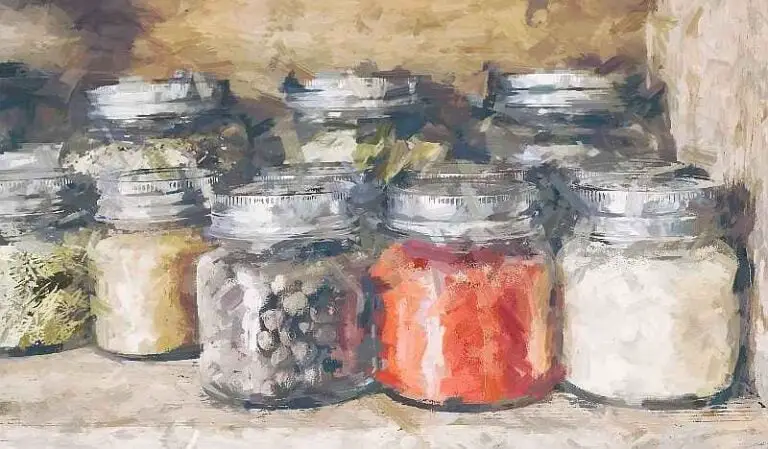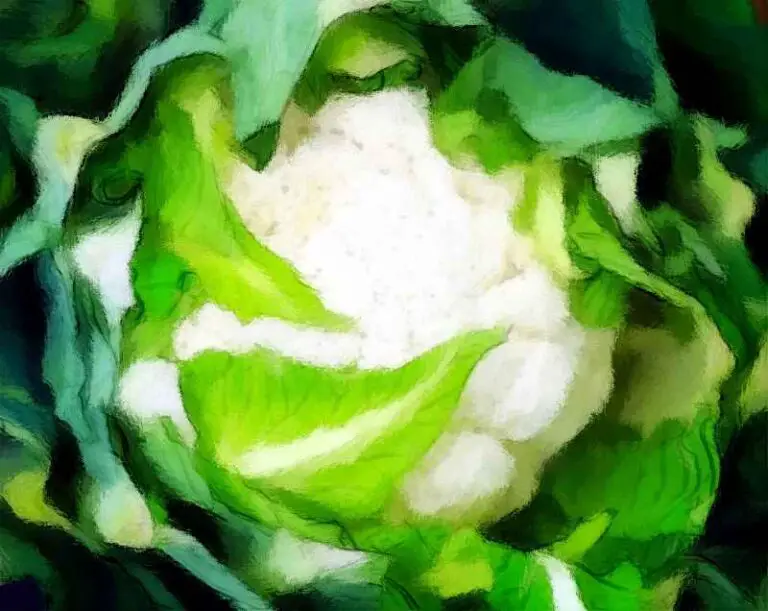Leftover Fermentation Brine – BEST WAYS To Reuse It
Discover the best ways to use leftover fermenting brine in your RECIPES, around the HOUSE, for your PETS and in the GARDEN!
If you have been wondering whether you could somehow reuse the leftover brine from your fermented vegetables, I am very happy to tell you that the answer is YES.
And it’s not that you “could” reuse it; you really really should!
Why it is a good idea to reuse the leftover brine from fermented vegetables
Reusing the leftover brine from fermented vegetables is a good idea for several reasons.
First, it is a way to reduce waste.
Second, the brine contains beneficial bacteria that can help to promote a healthy gut microbiome.
And third, you can add flavour to many recipes without using “fake” ingredients or spending extra money.
Plus its applications go way beyond cooking, as you will soon realise.
How to store fermenting brine for future use
First of all it is important to say that brine will keep in the fridge for up to six months and even longer under certain conditions.
BUT as we all know Nature does not come with an expiration date so make sure to use your smell and taste and common sense before using it.
To properly store the leftover fermentation brine, pour it into a clean glass jar, better if sterilised, that has a tight fitting lid.
It should not expand at fridge temperatures ( and because fermentation is supposed to be completed ) but, to be safe and not sorry, leave 3-4 cm ( 1-1.5 inch ) of headspace at the top of the jar.
When you’re ready to use the brine, give it a good shake and pour as much as you need for your project then put the rest back inside the refrigerator.
And now…
How to reuse fermentation brine
1. DRINK IT
Fermentation brine and sauerkraut juice both contain probiotics, minerals, trace minerals ( IF you used good salt ) and electrolytes.
Drinking them can improve overall well being, digestion and may even help boost the immune system
Use fermentation brine in smoothies and cocktails.
Fermentation brine can be used in smoothies, cold pressed juices and cocktails, like Bloody Mary, to add a salty, savoury flavour.
To use it simply add a tablespoon or two to your drink.
I won’t deny that at the beginnig the added brine might be surprising, especially in smoothies or juices, but in time the flavour will definitely grow on you.
You can also use fermentation brine as a rim for cocktails.
Just dip the rim of your glass in the brine then again in some sugar, salt or spices, if your cocktail calls for it.
2. IN SALAD DRESSINGS
Your salad dressings will be greatly enriched by the use of some leftover brine.
Being it so salty, tangy and, sometimes, funky it will add a ton of flavour and a pleasant kick to all your greens.
Yes, even the “boring” ones.
Simply combine brine with vinegar, oil, mayonnaise, mustard or any other sauce or herbs you love.
Try adding garlic, chillies and the zest of some citrus; then give it a taste and adjust the seasoning to your likes.
No more boring greens and vegetables in your household!
3. IN SOUPS AND STEWS
Brine can be used to enhance and deepen the overall taste of soups and stews.
And the process is so amazingly simple: all you need to do is adding some brine while your food is cooking.
That’s it.
In my opinion the earlier you add it the better, but it’s a matter of personal preference…
One thing is certain though: regardless of how early or late you’ll add it, you’ll be surprised at how much better your recipe tastes.
This is because the fermentation brine will add depth to your dish and will also bring out the flavours of the other ingredients
Ultimately, it will make your dish more complex, layered and interesting.
4. IN PASTA SAUCES
The same can be said for pasta sauces.
Add your chilli brine or sauerkraut juice to a tomato sauce, a ragú Bolognese, a mushroom based sauce…
Whether you are omnivore, vegetarian, vegan, paleo, keto or Vulcanian, this little addition will lift your pasta dish to deliciously high levels.
5. IN HOME MADE BREAD
Whether you are a sourdough bread fan or a bakers’ yeast user adding some beautifully fermented salty brine to your home made bread will be an absolute game changer.
Gently or heavily flavoured by the vegetables fermented in it, the brine will leave unmistakable tasty footprints in every loaf you bake.
Try it once and you’ll hope to always have some leftover brine to spare!
6. IN VEGGIE BURGERS AND PATTIES
Let’s be honest: the taste of home made vegetable burgers, patties and falafel is often pretty bland.
But from today it will be no more!
In fact a little leftover brine from your fermented veggies can successfullly enhance their taste without ANY articial ingredient.
Simply add it when you mash beans or chickpeas or when you precook vegetables before making them into a burger.
Alternatively you can pour it in the boling the water before adding rice or quinoa or drop it in a bowl with the rest of the ingredients.
If the burger mix comes out too runny just add a tiny bit of flour or corn starch.
7. AS A MARINADE FOT MEAT OR FISH
The acidity of fermented brine will help to break down the proteins in meat and fish, making them more tender while flavouring them at the same time .
In fact it works like a charm as marinade for chicken, fish, or vegetables.
To use fermenting brine as a marinade, simply soak your ingredients in it for at least 30 minutes.
Thirty minutes is really the shortest you should go, opting instead for longer immersions up to 12-24 hours ( in the fridge ) for the best results
It goes without saying that the more time you give food to absorb the flavours of the brine, the more tender the meat and the tastier the recipe will be .
Then when you are ready to cook, simply remove the ingredients from the brine and proceed as usual.
If you are like me, you will be amazed at how much better the whole dish tastes… you should really really give it a go.
8. AS A CLEANING PRODUCT
DISCLAIMER: Always do a test on a hidden spot as nobody can predict how each material will react.
One of the many applications of leftover brine, and one that is often overlooked, is to use it as a cleaning product.
A cleaning product that is effective, 100% natural, costs you nothing and is also zero waste.
Could we ask for more?
Brine from fermentation has a high acidity, contains a good amount of salt and is inhabited by a huge number of good bacteria and enzymes.
It is also known to have anti-microbial properties.
In fact the lactic acid bacteria that populate it, function as a bacteria police force that mantains the brine safe by fighting the bad guys.
And now, let’s get cleaning, shall we?
The brine-cleaner works very well on countertops, stainless steel stove tops ( they turn out sparkling clean ), cutting boards and for every bathroom surface.
It is also a very effective way to remove the burnt marks from the bottom part of pots and pans.
At the beginning I advise you to use it diluted with water, take some time to experiment and proceed to a more concentrated solution when confident.
But always make sure to rinse with abundant water, because Nature, you know, is often unpredictable.
9. AS A FERTILISER
First and foremost it is important to remember that plants and high salt concentrations might not always go well together.
Especially if you used so called “table salt” to make it.
So it is absolutely necessary to heavily dilute the brine BEFORE using it to water your plants or veggies, let alone using it as a foliar spray.
Assuming the salt concentration to be around 2.5% and assuming you used GOOD QUALITY salt, such as unrefined sea salt or rock salt, I would choose a 1 to 10 dilution.
Which translates into 1 part of brine every 10 parts of water.
And I would suggest an even lower one if applied directly to the plant; let’s say 1 to 100 ( 10 ml / 1 small tbsp for every litre / quart of water )
With that said, spraying plants with leftover brine is a great way to protect them from pests and potentially harmful microorganisms.
And watering them once or twice a month with diluted brine will provide great fertilisation to the soil and add extra life to the ecosystem.
Your plants will thank you by growing much faster, much healthier and by producing more nutritionally dense fruit and vegetables.
10. AS AN INSECT REPELLENT
There are many benefits to using leftover fermentation brine as an insect repellent for both the house and the garden.
In fact, beside being quite effective, it is 100% natural and environmentally friendly.
Plus, it can save you money.
Used around the kitchen fermentation brine helps to keep insects away.
In this instance, though, the type of vegetables and herbs that have fermented in it, how long theyh have fermented for and how acetic the brine is as a result, will play a big role in determining how effective it is.
So if you have leftover brine from anything that was fermented with garlic or chillies -or both- you have in your hands a very potent insect repellent.
Potent also means that it will work well diluted and that will last you longer.
Try it in the kitchen, around the house and sprayed on your plants.
11. AS A FACIAL TONER
Sauerkraut is a delicious food, we all know about it.
What many don’t know though is that its brine, and the brine from any other fermented vegetables, is a wonderful facial toner.
The high concentration of lactic acid in fermented brine makes it an excellent exfoliator that can improve the brightness of your skin and help to restore its natural PH.
It is also incredibly simple to use.
For the first times you will have to dilute the brine to allow your skin to adjust to it: opt for 1 part of brine for every 3/4 parts of water.
If your skin tolerates it well then you can try a more concentrated version, but the idea is neither to push it or rush it.
To use, simply pour some drops of brine on a cotton pad and wipe it over your face after cleansing.
Allow the toner to dry on your face, then moisturise if necessary.
In just a matter of few applications the change in your skin tone and brightness will be noticeable.
12. FOR YOUR PETS
Just like humans cats and dogs can benefit from drinking fermentation brine, as the richness of probiotics can help their digestion too.
Pets that drink fermentation brine might experience less gas and bloating and might be able to better absorb nutrients from their food.
The way I give it to mine is by adding a tiny amount to their drinking water: 1 tablespoon for a medium or big sized dog and a teaspoon for a small one.
For a very small dog or a cat I suggest to start with half a teaspoon.
There is also a positive side effect to adding fermented brine to your pet’s drinking water and it has to do with pathogens.
In fact, thanks to the lactic acid bacteria contained in it, the growth of potentially harmful microorganisms, like E. Coli, will be sensibly slower.
These are the ways we reuse and upcycle brine in our home, and you?
Do you know any other use for leftover brine?
Let us know!








Helpful article, thank you!
Oh…thank YOU!
I am very very happy you found it useful.
Completely answered the question in my head this morning on how to use as an everyday meat brine, the gallon of leftover brine from first, cayenne with garlic and ginger, then a second go round with asparagus. Thanks!
That’s GREAT!
And I have the feeling that, whatever you’ll be making, it will taste fabulous!
Don’t forget to let us know how it turns out.
This is such a great collection of ideas. I was just looking for confirmation that I could use the brine as a meat bring/marinade and I got all these other ideas as well. Thanks!
You are so very welcome Kevin!
I am very glad you found our post useful and please make sure to let us know how our suggestions worked out for you.